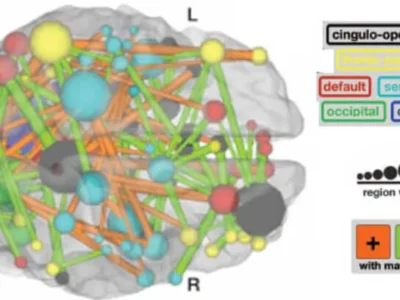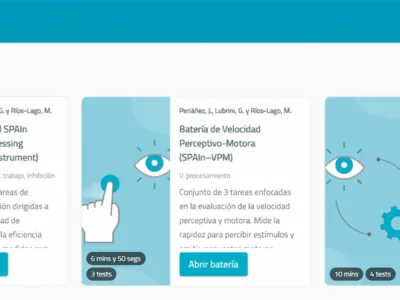Lidia García, clinical neuropsychologist and researcher, presents in this second volume the theoretical models of temporality and models of recovery of confabulation.
Confabulations can be defined as false memories resulting from a retrieval problem, of which the patient is unaware and whose belief in the veracity of the memory is genuine [1].
In a previous article the types of confabulations, the underlying neuropathology and the cognitive mechanisms that contribute to their manifestation were briefly presented. In this second installment of the series, the main models proposed from neuropsychology to explain confabulations are reviewed succinctly.
Theoretical models of confabulations
The earliest models proposed to try to explain confabulations considered them a compensatory mechanism, resulting from the need to fill in memory gaps. Today, however, this explanation is no longer considered, although some current motivational models allude to emotional processes to explain their content [1].
Within neuropsychological explanations one can generally speak of two large groups of theoretical models: temporality models and retrieval models [1].
Models of temporality
The temporality models conceive confabulation as the result of a distortion of the sense of chronology or confusion of temporal order, so that patients who confabulate may remember the content of events but not the sequence in which they occurred. This explanation developed from the observation that in many cases the confabulation can be traced back to a true memory that is misplaced in time.
Within this perspective there are different proposals:
- Dalla Barba’s group maintains that confabulations reflect an altered awareness of personal temporality. Under their approach there exists a temporal consciousness that consists of three dimensions (past, present and future) and they suggest that patients who confabulate retain the awareness of a present, past and future, but due to a deficit in the ability to assignthe memories to specific points in time, they confuse them within these three dimensions; so habits and semantic knowledge are incorporated as personal events [1] and at the same time, when asked about recent or prospective memories, they tend to respond with routines or long-term memory habits, regardless of their relevance in the present [2].
- For Schnider and his group, spontaneous confabulations (see the confabulation classifications in the volume I of this series) are the result of a confusion of current reality with past events, derived from the inability to suppress information that was relevant in the past but is irrelevant at the present moment. Thus, they propose that the primarily altered mechanism is suppression and that this deficit would occur before the content of the memory can be recognized, which would explain the conviction with which patients who confabulate maintain the truthfulness of their memories [1, 2]. At the same time they point out that the brain area key implicated in spontaneous confabulations is the orbitofrontal prefrontal cortex.
- A more general case of the temporality hypothesis would be the reality and source monitoring theory, which understands that confabulations result from an inability to determine the source and the context in which memories were acquired. Specifically, the reality monitoring refers to the capacity to discriminate a memory of a past perception from an act of imagining the past, and the source monitoring to the process that allows distinguishing the different information sources of a memory (the medium and the sensory modalities through which it was perceived) and specifying the contextual conditions under which it was acquired (temporal, spatial and social context). From this perspective, the production of confabulations can be due to failures in different mechanisms, including the encoding, retrieval, motivation and evaluation of memories and therefore, there would be different deficits that could lead to confusing internally generated memories (memories of acts of imagination of the past) with externally generated memories (real events of the past).
Limitations of the temporality and reality and source monitoring models
The main limitation of the temporality hypothesis that has been pointed out [1, 3] is that temporal decontextualization is not specific to the phenomenon of confabulation, since confusions in this dimension have been observed both in confabulators and in amnesic patients who did not confabulate.
On the other hand, the empirical evidence supporting temporality models comes from studies on confabulations that affect episodic memory and therefore, these theories cannot explain fantastic confabulations, nor those that affect semantic memory [1].
Likewise, it has been noted that from studies that have tested the source monitoring hypothesis, it can be concluded that a deficit in this capacity is not specific to confabulations either (it can occur in patients without confabulations) nor does it predict them [1]. Another argument against this explanation is that there is some discrepancy between the anatomical structures implicated in source monitoring (dorsolateral areas of the prefrontal cortex) and those identified as crucial for confabulations (orbitomedial and ventromedial areas of the prefrontal cortex) [1].
Retrieval models
Retrieval theories allude to the reconstructive nature of memory. According to these models, confabulations could be the result of specific deficits in the retrieval mechanism, rather than alterations in encoding, consolidation or storage processes [1].
The strongest evidence in favor of this hypothesis is that it affects both retrograde and anterograde memories; nevertheless, since retrieval is not a unitary process, it is necessary to specify which retrieval component fails to lead to confabulations [1].
Within this group of models there are two main ones:
- Gilboa and Moscovitch, within their global memory model, distinguish two types of retrieval processes: associative or cue-dependent retrieval (a relatively automatic process) and strategic retrieval.
In associative retrieval, a nearby cue interacts automatically with the information stored in memory to retrieve the sought-after memory and other memories that in turn serve as cues for further searches. The cue would directly activate neuronal groups in the medial temporal lobe and the posterior neocortex jointly.
Strategic retrieval processes would apply when the cue-dependent retrieval process is ineffective. These processes would be mediated by different areas of the prefrontal cortex and encompass:
- Establishing the retrieval mode.
- Using general and personal knowledge to narrow the search.
- Monitoring, which involves evaluating and verifying the accuracy of the retrieved memory.
- Placing the retrieved memory in the appropriate spatio-temporal context in relation to other events.
Thus, errors in cue-dependent retrieval could give rise to confabulations, but are not a necessary condition for their manifestation. In confabulating patients, the initiation of the strategic retrieval process often fails, but also different failures in the other subprocesses could lead to different types of confabulations, thereby explaining both spontaneous and provoked confabulations within this model.
- Burgess and Shallice develop their explanation of confabulations from the analysis of autobiographical memory protocols of healthy volunteers, and propose that dysfunction of temporal context is part of the monitoring and evaluation process.
In their strategic retrieval model they identify 3 components:
- Description processes, which specify the type of trace that satisfies the demands of the retrieval task
- Memory editing processes, which continuously check that the different retrieved memories fit with each other and also with the task demands
- Mediating processes, which are general strategy and problem-solving procedures that are involved in supervising the adequacy and plausibility of retrieved memories but are not, in themselves, memory-specific processes.
According to this proposal, deficits in description, editing and mediating processes will give rise to different types of confabulation.
Limitations of the retrieval models
As has been pointed out, from these models one might expect poorer performance on recall tasks than on recognition tasks, as well as deterioration in specific executive processes such as the initiation of (search) responses and difficulties in monitoring and inhibiting inappropriate responses [1].
However, the different studies on the neuropsychological correlates of confabulations are not consistent, so although the evidence seems to suggest that both memory and executive deficits are involved in the phenomenon of confabulations, it has not yet been sufficiently clarified which specific processes within these functions are responsible for confabulation [1, 4].

Subscribe
to our
Newsletter
Bibliography
- [1] Lorente-Rovira E, McKenna P, Berrios G, Villagrán-Moreno JM,Moro-IpolaM (2011). Confabulations II: explanatory models. Actas EspPsiquiatr, 39(6):384-92.
- [2] Glowinski R,Payman V &Frencham, K. (2008). Confabulation: a spontaneous and fantastic review.Australian and New [1.] ZealandJournal of Psychiatry, 42:932-940.
- [3] Metcalf K, Langdon R, Coltheart M. (2007). Models of confabulation: a critical review and a new framework. CognNeuropsychol, 24(1):23-47.
- [4] Lorente-Rovira E, McKenna PJ, Berrios GE, Moro M, Villagrán JM (2011). Confabulations (I): Concept, classification and neuropathology. Actas EspPsiquiatr, 39:251-9.
If you liked this post about the phenomenon of confabulation, you might be interested in these NeuronUP articles.
“This article has been translated. Link to the original article in Spanish:”
El fenómeno de la confabulación (Vol. II): modelos teóricos







 Applications of neuromodulation in neurorehabilitation
Applications of neuromodulation in neurorehabilitation
Leave a Reply